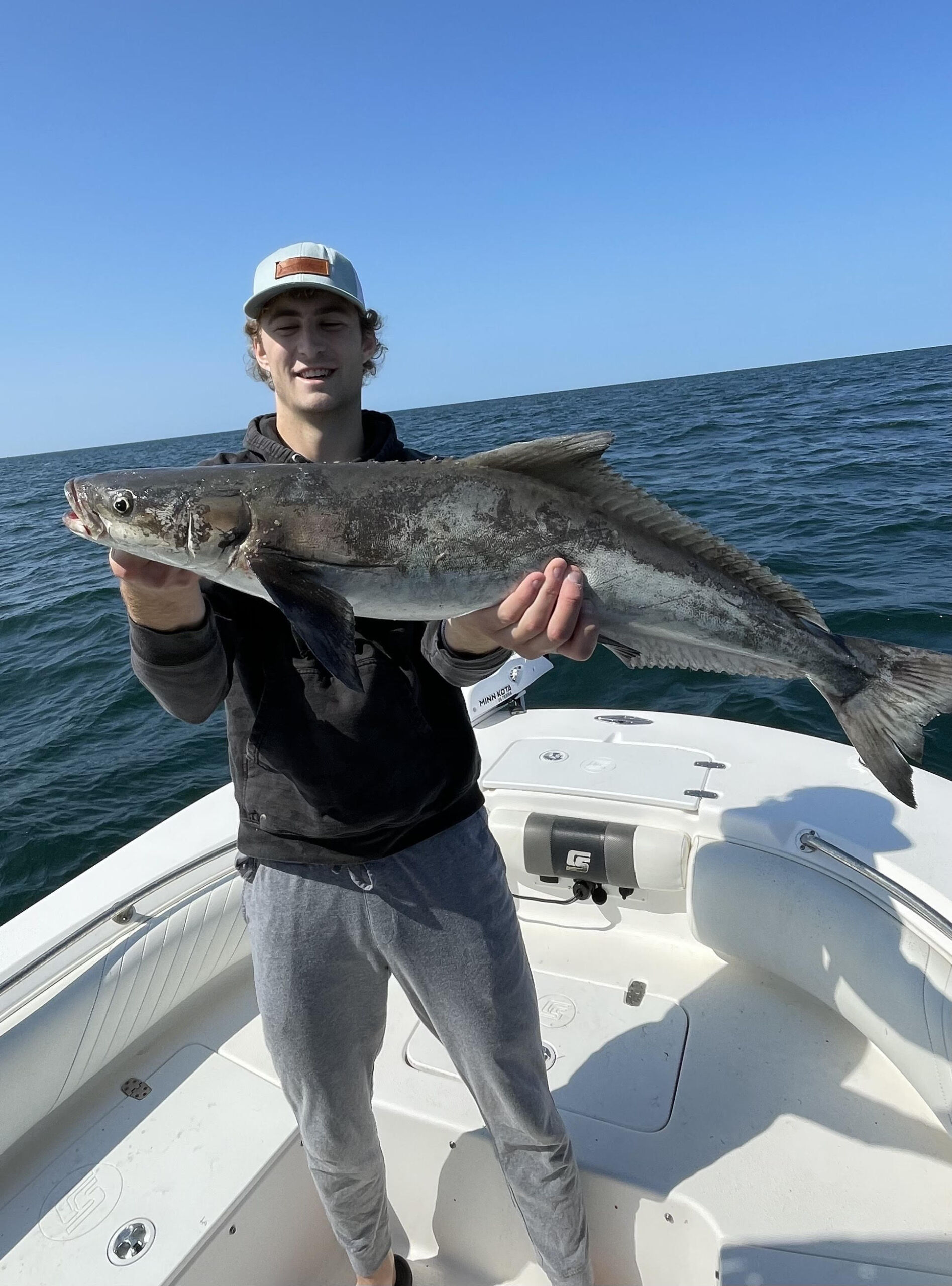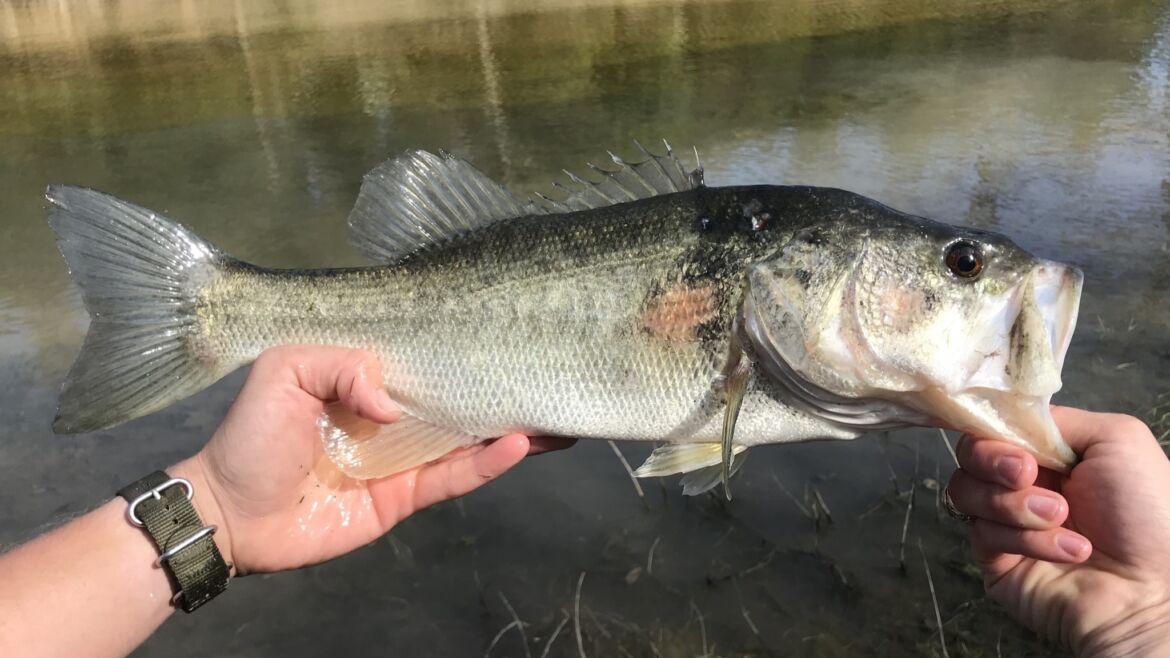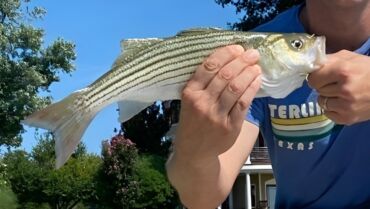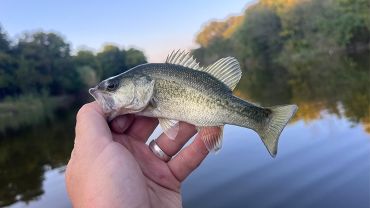Anyone can cast a lure and catch a Bass, that is if you know when and where to go fishing and what lures to use. However, most experienced anglers understand that certain times of the year are much more productive than others. Fish bite more and hit lures harder, and different areas are more productive at certain times.
There are a lot of factors that contribute to how successful your fishing trip will be, but one time of the year, in particular, is a lot more productive, especially during the spawning season.
Understanding the Bass spawning season and when the best time to go angling can be difficult for beginners, but don’t worry! We prepared a comprehensive spawning season guide to give you the best chance of catching your dream fish.
In the following Bass spawning guide, we’ll focus on:
If you love Bass fishing, and let’s be honest, who doesn’t? Be sure to check out Master Bass Fishing: A Comprehensive How-To Guide for Bass Fishing to learn more about catching Bass in your local area.
There’s just something magical about landing a big Bass and all the challenges that come with Bass fishing, but even the best anglers need a little help every now and again. Thanks to the Fishbox, a premium Fishing Forecasting App, you’ll know the best time to chase big Bass and when you’re better off relaxing at home and catching up on that to-do list!
Get your personalized fishing map
Answer a quick quiz and get your own personalized fishing map
Expert Opinion on When Do Bass Spawn

Pierce Latta
16 years fishing experience
“Bass fishing is honestly a staple in the American fishery. It’s extremely hard to find a species so widespread and available that many of this country’s anglers can probably say that they have caught one before. Bass fishing for me was historically just a way for me to hold myself over until I got to saltwater fishing later in the year. As I’ve grown and matured (at least a tiny bit…) I’ve come to realize the true artistry and skill of what it takes to become a great bass angler. I cannot even come close to pretending that I am close to that level, but we’re moving in the right direction. After reading this article, I can say with complete honesty that I’ve learned even more information about the largemouth bass so let’s get straight into it. For starters, the bass spawn is one of the most electric and exciting times of the year for freshwater anglers. Bass put on a good deal of weight and come into shallow flats to spawn and raise their young. This creates a perfect storm for bass anglers. Right off the bat, we get a little information on the general timeline of the bass spawn and the water temperatures it typically occurs in—pay careful attention to this and then see whether or not local waters near you are getting close to this temperature. Also, keep in mind that spawn time changes across different bodies of water and even in the same bodies of water because temperatures vary based on depth. The article continues and begins to break spawn down into three super helpful categories pre-spawn, spawn, and post-spawn. Understanding these different periods is essential to your success as a bass angler at this time of year. We then push further into the article which talks about more factors that influence spawn like temperature, moon phases (which I had never known anything about), and location. Upon reading this section, I came to realize that I should have considered some of the factors a long time ago because I probably would’ve had far more success. The section that follows talks a good deal about the actual nature of the bass spawn and what takes place. It is crucial that you understand this because the more you know and understand about the bass and its behaviors the better you get at being able to present what they want to bite. The next section gives some tips and tricks about fishing the bass spawn, particularly referencing some baits like lipless crankbaits, jigs, and more. What I have always been told is that when bass are held close to their beds protecting their young, you want to throw something that is threatening to them and their young so that they are forced to attack it. The article then wraps up with a conclusion. If you take away one thing from this article it should be this: fishing is a science. You have to pay attention to external factors that could and will play into the bite of the fish. Upon grasping a better understanding of some of these factors, you will find that fishing becomes a little easier and more successful. I hope you have enjoyed reading this article and these comments, and as always, good luck and tight lines!”
Visit his Instagram profile.
Subscribe to his YouTube channel.
When Does Bass Spawn?
When you understand the Bass spawning season, you’ll be in a much better position to maximize your spring fishing. Each spring, millions of Bass begin their spawning season, migrating into the shallow water to lay, fertilize, and hatch their eggs.
Once you have a better understanding of how Bass move through their spawning season, you’ll be in a better position to target them. Spring is the perfect time to catch Bass, especially if you know how they’ll act and where they’ll be.
When the waters hit the 60-degree range, the Bass spawn starts. It’s this temperature that typically triggers the spawn, so in warmer states such as Florida and Texas, fish will begin spawning a lot earlier, and in colder states like Minnesota, the spawn will start later in spring.
Look for the warmest and flattest bays in any body of water you’re fishing in to find Bass during the spawn. Pre-spawn and post-spawn are some of the most productive fishing times.
Bass Spawning Phases
The Bass spawning season is broken down into three distinct stages:
- Pre-Spawn.
- Spawn.
- Post-Spawn.
Between April and May, anglers in the United States get to experience some of the best Bass fishing of the year. That doesn’t mean that you can’t catch Bass year-round, but this period certainly offers some of the most exciting action.
During these months, Bass transitions to shallower waters, leaving the depths of lakes and rivers to create future generations of fish. The three stages of the Bass spawn you’ll need to focus on include pre-spawn, spawn, and post-spawn.
Pre-Spawn
Once water temperatures start to rise above 50 degrees, eventually reaching 60 degrees, the pre-spawn begins. Bass will begin to stage up around structures such as grass flats, channel banks, and steep banks. These staging areas are typically located near ideal bedding areas. Large female Bass are hanging around these staging areas, venturing into shallower water, ready for the spawn which makes it the ideal time for anglers to target them.
Spawn
When the water temperatures start to stabilize in the 60-degree range, which typically corresponds to the first full moon of the month, the spawn starts. Male Bass will start looking for food and building nests in protected waters in the 2–10-foot depth range. Once the beds have been made, female Bass will choose their preferred bedding area and lay their eggs, which are then formalized by the male Bass.
Once the eggs have been fertilized, the females will leave the nesting areas, and male Bass will take over protecting the eggs and juvenile fish. Their top predators are Perch and Bluegill, and lures that imitate either of these species will prove productive. Please release any Bass caught during this period so that they can return to their job of protecting young fish.
Post-Spawn
During the post-spawn period, Bass like to hang around their spawning areas for several weeks, not only to protect the juvenile fish but also to feed and recover after the spawn. Once water temperatures hit the 70-degree range, most Bass will leave the spawning areas and start transitioning back to deeper water where the temperatures are cooler.
Water Temperature and Bass Spawning
Rather than following a set calendar date, water temperature is critical to when Bass chooses to start spawning. Unfortunately, this isn’t at the exact same time every year, and each state’s spawning season will depend on the weather conditions.
Warm states like Florida or Texas will see their Bass spawn start a lot sooner than mid-western states like Illinois, Michigan, or Minnesota. Checking out your state’s fishing records will be a great way to get a general idea of when the spawn should start. Once you know the general date, you’ll have a good idea of the spawn within a week or two.
The three factors you want to focus on are temperature, moon phases, and location. These three factors will ultimately determine when the spawn starts. Ideal water temperatures are between 55-65 degrees.
Optimal temperatures will begin in the southern parts of the United States in February and then start to progress from there in the northern states.
The moon’s effect on the Bass spawn is one of the most controversial factors. Ask any experienced Bass angler, and you’ll get a different answer or opinion on how much of a role the moon plays in the spawn. Many experienced anglers believe that the Bass will begin their spawn immediately after the first full moon once water temperatures are consistently above the 60-degree range.
While this may be true in some cases, the water temperature still needs to hold steady in that 60-degree range in order for the fish to start their spawn. However, keep the moon phase in the back of your mind and don’t dismiss it. Temperature, location, and moon phase are all excellent indicators of when the Bass spawn will begin, and all three play their own role.
Largemouth Bass Spawning
Like other Bass, Largemouth Bass will be looking to feed after the cold winter months in order to be in peak physical condition for their spawn. However, as water temperatures fluctuate, Largemouth Bass will move in and out of shallow water.
As Largemouth Bass get ready to spawn, they’ll feed around structures and cover such as logs, docks, banks, and rocks. As the spring sun warms up the shallow water, Largemouth Bass will move into these locations. Large lakes with shallow, cloudy, or murky water will see more action sooner compared to deep lakes with clear water.
South-facing, northern sections of lakes, which are exposed to the most sunlight, will be the most productive areas to target first. Any protected bays or shallows that retain heat longer will always be the most productive areas to target.
When the water temperatures stabilize in the 60-degree range, Largemouth Bass will move into the shallows and spawn. However, a rapid change in water temperature due to a cold front can drive Largemouth Bass off their spawn beds, but they won’t wander too far.
Largemouth Bass won’t all spawn on the same day. So, if the Bass in the shallow waters aren’t actively feeding, try to target the fish that are still staging in deeper waters getting ready for their turn.
Remember, while the Largemouth Bass in shallow waters can be more aggressive in how they feed, they’re also dealing with more angling pressure, especially during the peak of the spawning period.
Another hot tip is that larger female Bass are often lurking around in the deeper water while the males make the spawn beds. Try fishing the deeper channels and areas around the spawning beds in order to target these larger female fish. Females only hold in the shallow water long enough to lay their eggs, and then they’re gone again, back to the safety of deeper water.
Read also: Largemouth Bass Seasons: A Comprehensive Guide
Factors Influencing Bass Spawning
As we mentioned above, location, weather, and moon phases all play a significant role in when Bass will spawn in a specific state. Even in the same state, Bass may spawn several weeks earlier or later than in previous years due to these factors.
Staying up to date with the local state fishing agency will be a great way to get a better understanding of when the fish will start their spawn. If you’re familiar with the area you plan on fishing, and know some local Bass anglers, talk to them about when they believe the spawn will start or has happened in previous years.
Once you understand the general period to be on the lookout for, it’s just a matter of waiting for the water temperatures and moon phases to align perfectly.
Warm states like Florida or Texas will see their Bass spawn start a lot sooner than mid-western states like Illinois, Michigan, or Minnesota.
Tips for Bass Fishing During Spawning Season
The shoreline points close to shallow water are key areas to target in the pre-spawn. Channels and gutters leading from deep water to shallow are key transition and staging areas for both male and female Bass.
Fishing underwater structures with crankbaits, lipless crankbaits, and most jigs, which are slowly and methodically dragged across the bottom, are effective on these early pre-spawn Bass.
As the fish move into their spawning areas, medium-diving crankbaits will be extremely effective. You want to use bright colors on your lures in cloudy water and natural patterns if you’re fishing in clear water. Try to run the crankbait deep enough that it bumps along the bottom. Another effective method is a jig that’s been tipped with a plastic craw. It’s a great way to fish different areas and see what fish are about. Try black and blue colors in any murky water, and a pumpkin or watermelon color if you’re fishing clear waters.
Fishing Bass on their beds can be extremely productive. However, you will need to deal with excessive pressure from other anglers. Try targeting fish on their spawn beds using Texas-rigged soft plastics.
When do Bass Spawn: A Comprehensive Guide to Bass Spawning Season – Conclusion
There you go! Everything you ever wanted to know about the Bass spawning season. As responsible anglers, it’s vital that we all do our part to ensure the ongoing success of the fishery. By releasing fish that are undersized or not needed, we’ll be able to ensure that future generations of angers get to enjoy the same exciting Bass fishery we all enjoy today for many years to come.
The advanced technology contained within the Fishbox App will allow you to track weather conditions accurately and predict the best times to go Bass fishing. Fishbox App combines weather, lunar, and tidal conditions with predictive fish behavior to deliver optimal fishing opportunities throughout the United States.
Get your personalized fishing map
Answer a quick quiz and get your own personalized fishing map
If you would like to share your Bass fishing tips and tricks with other anglers, comment below. We love to receive your feedback, and we know that new anglers appreciate the guidance and wisdom from experienced anglers.



